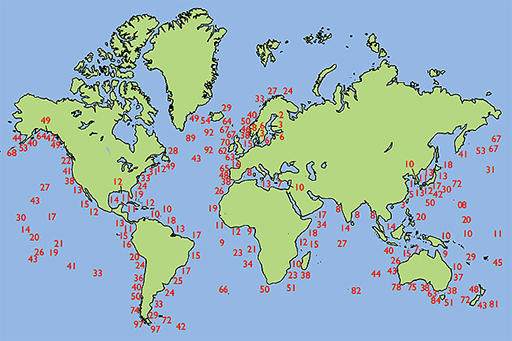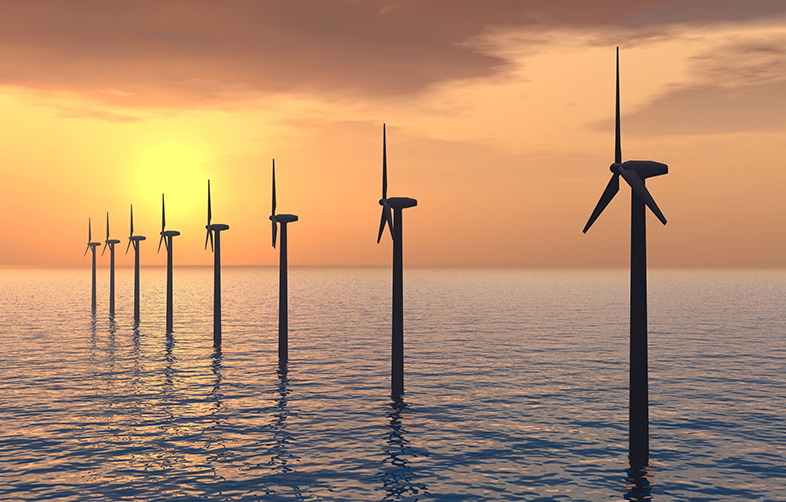2 Wave energy resources
Figure 7 shows estimates of the average wave power density at various locations around the world. The areas that are subjected to regular wind fluxes are those with the largest wave energy resource. South-westerly winds are common in the Atlantic Ocean, and often travel substantial distances, transferring energy into the water to form the large waves that arrive off the European coastline.

Regarding the UK, Thorpe (2003) estimated that the total annual average wave energy along the north and west side of the United Kingdom ranges from 100 to 140 TWh per year at the near shore, to about 600 to 700 TWh per year in deep water. The proportion of this resource that could actually be harnessed to produce electrical power depends, of course, on various practical, technical and economic constraints.
Thorpe (1992) estimated that the technical resource (i.e. the resource technically available regardless of cost) is between 7 GW and 10 GW annual average power, equivalent to 61 to 87 TWh per year, depending on the water depth. In comparison, total UK annual electricity production in 2010 was approximately 360 TWh. Table 1 gives a breakdown of the resource at different water depths.
| Water depth/m | Average natural resource | Average technical resource | ||
| GW | TWh per year | GW | TWh per year | |
| 100 | 80 | 700 | 10 | 87 |
| 40 | 45 | 394 | 10 | 87 |
| 20 | 36 | 315 | 7 | 61 |
| Shoreline | 30 | 262 | 0.2 Footnotes 1 | 1.75 |
